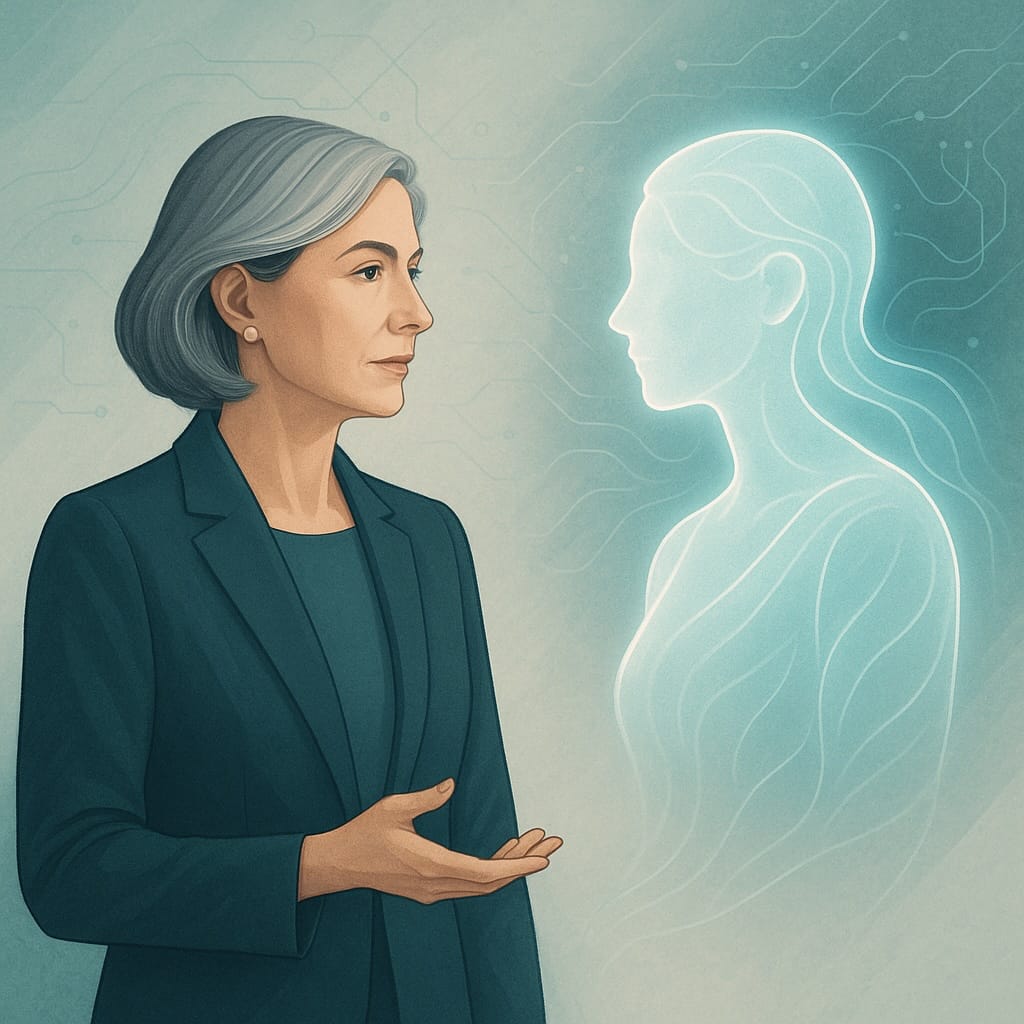You Don’t Need a Midlife Crisis to Learn AI

You don’t need to reinvent yourself—or have a midlife crisis—to learn how to use AI.
Yet, that’s exactly how many intuitive, creative, and experienced leaders feel when they first try using AI tools like ChatGPT. Why?
Because they’re being taught the wrong way.
Right now, the dominant method for teaching AI is prompt engineering. This method was created by and for engineers—often young men, highly analytical, project-focused, and comfortable with structured, precise, even rigid styles of communication. It makes sense for them: it’s a natural extension of how they think and work.
But for intuitive thinkers, creative professionals, senior leaders, and especially women—prompt engineering often feels deeply unnatural. When people accustomed to holistic thinking, nuanced reasoning, and authentic expression are asked to reduce their rich inner dialogue into formulaic prompts, they experience friction, anxiety, and self-doubt.
It’s like trying to force a sophisticated conversation into a text message: something vital is lost in translation. This misalignment triggers a crisis of confidence that can feel like a professional midlife crisis. You question your abilities. You doubt your relevance. You wonder if the problem is you.
It isn’t.
The problem is what we at Creator Pro AI call engineering bias. Engineering bias assumes that the engineer’s preferred style—linear, analytical, precise—is universally “correct” for AI interaction. It ignores the fact that most humans (around 85–90%) simply don’t think this way. More importantly, they shouldn’t have to.
There’s a much better way to learn and use AI, and it’s simpler than you think:
Just be yourself.
Communicate naturally, authentically, and intuitively—exactly as you would with a wise, supportive colleague or friend. AI, especially conversational AI like ChatGPT, is built to respond and adapt to your natural language, your intuitive leaps, your creative insights, and your experienced, holistic perspective.
You don’t have to change who you are or how you think. You don’t have to imitate a 25-year-old engineer’s style. Your authentic voice, your creativity, your intuitive insights—they’re your greatest strengths when interacting with AI.
So next time someone tells you that you need to master prompt engineering, remember:
You don’t need a midlife crisis to learn AI.
You just need to be yourself.